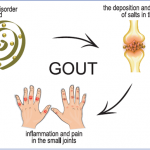
BETHESDA, MD—Drug research that includes information about benefits and harms to specific types of patients would be a boon for rheumatologists frustrated with a limited number of expensive drugs plagued by myriad side effects and a dearth of data comparing how well they work in particular groups of patients.
That situation may be changing, thanks to recent action by the federal government and insurers. The most recent reauthorization of the Prescription Drug User Fee Act (PDUFA V) places greater emphasis on risk–benefit analysis, while the federal healthcare reform law funds comparative effectiveness research (CER). Meanwhile, insurers are increasingly using health technology assessment (HTA), which emphasizes attention to how drugs perform in certain patient subgroups, said speakers here at the DIA/FDA Statistics Forum 2013, held April 21–May 1.
At the conference, statistics experts from academia, government, and drug companies gave advice about designing better drug trials, improving measurement of interventions’ benefits and harms, and getting information about different types of patients in intended treatment populations.
Evaluating Benefit and Risk
PDUFA V helpfully stipulates that the Food and Drug Administration’s (FDA’s) assessment of drugs should include quantitative consideration, plus subjective qualitative weighing of evidence. But PDUFA V doesn’t specify a standard methodology for doing so, leaving it up to researchers to best conduct risk–benefit analyses and evaluate overall patient utility, said Scott Evans, PhD, senior research scientist Harvard School of Public Health in Boston.
Neither does PDUFA V address certain limitations of traditional analyses. Separating marginal analyses of benefits and harms, as researchers currently do, won’t distinguish between two important, different scenarios, he said. These are benefits occurring in the same patients that experience toxicity, and benefits occurring in different patients than those that experience toxicity. In the first case, the issue of weighing benefits and harms is important. In the second, subgroup identification and analysis is key. “To distinguish these two scenarios, within-patient analyses are needed, whereby efficacy and safety data are combined within-patient. Then results are summarized by intervention and compared. Such analyses are more consistent with the evaluation of individual patient care,” Dr. Evans explained.
He suggested that the association between benefits and harms and heterogeneity of effects be considered part of standard evaluation of drugs.
Such an approach may have yielded additional information from the BEST (Beta-Blocker Evaluation of Survival Trial) study. Results published in the New England Journal of Medicine (NEJM) in 2001 showed that bucindolol resulted in no significant overall survival benefit in a demographically diverse group of 2,708 patients with New York Heart Association class III and IV heart failure.1 Dr. Evans suggested a composite ordinal variable derived from several benefits and harms—such as hospitalizations and cardiac events—may provide a more complete characterization of disease burden and help to elucidate treatment effects.
